Soaring over an expanse of blue sea, a white bird traverses the screen diagonally. Gliding unhindered through the air, it is the embodiment of freedom; by contrast, the movement of people down below is constrained by border crossings and passport controls. The perfect tranquility of this opening shot is the calm before the storm; prepare to spend the next two hours witnessing extremes of human misery and, by turns, feeling horrified, angry and deeply depressed.
A boat comes into view, chugging in the opposite direction. Overloaded with refugees making their way across the Mediterranean to the Greek Island of Lesbos, it floats low in the water. As it reaches land, people clamber out onto the beach – cold, wet and exhausted, but jubilant. They are the lucky ones; thousands of others have drowned attempting the crossing.
There to greet them with cups of tea is Chinese artist and activist Ai Weiwei. Over the course of a year, he visited 23 countries to make this harrowing documentary about the global refugee crisis. It's a subject close to his heart; in effect, he has been a refugee most of his life. During the cultural revolution, his father was denounced as a poet and his childhood was spent in labour camps. Weiwei now lives in Berlin; returning to China is out of the question since he was arrested in 2011 on charges of tax evasion and kept in solitary confinement for 81 days. His real “crime” was to lead a citizen’s investigation into the many schools that collapsed during the Szechuan earthquake of 2008, killing over 5,000 children.
His findings – of faulty materials and substandard construction – later found their way into his work. In 2015 he filled the main gallery of the Royal Academy with “Straight”, an installation that honoured the dead children by inscribing their names on the gallery walls. Lying on the floor in a wave-like formation were 90 tons of reinforcing rods salvaged from the ruins and straightened out, as though to smooth away the horror of the disaster.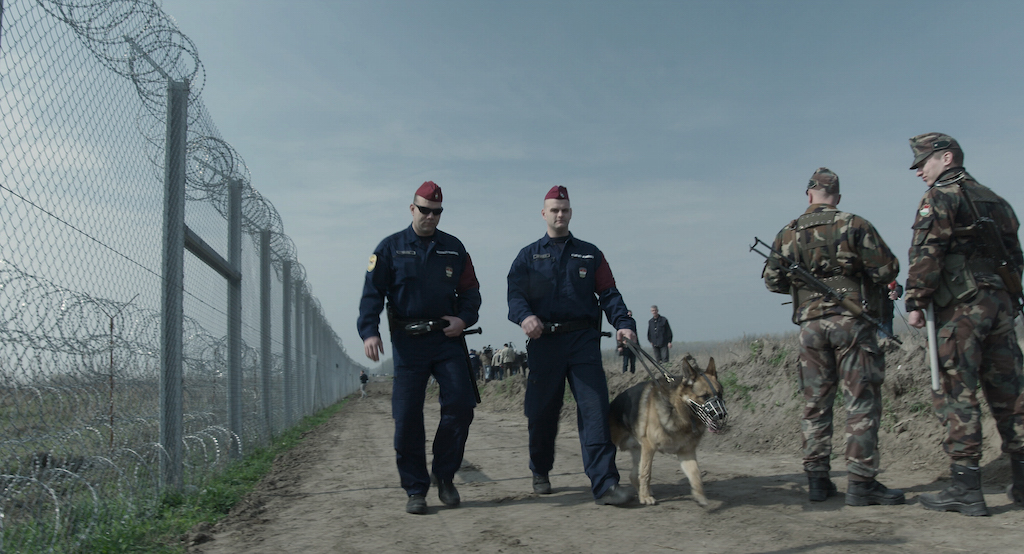 Human Flow is his first full-length film and rather than seeking to smooth things over, it confirms the epic scale of the current crisis. The effects of climate change, famine and war have forced 65 million people to abandon their homes worldwide. It's the greatest displacement of people since World War II, and no one knows what to do about it.
Human Flow is his first full-length film and rather than seeking to smooth things over, it confirms the epic scale of the current crisis. The effects of climate change, famine and war have forced 65 million people to abandon their homes worldwide. It's the greatest displacement of people since World War II, and no one knows what to do about it.
The tragedy is twofold. On the one hand there are those who risk everything to go in search of safety and a better life. “No one leaves their country lightly,” says an Afghan woman making her way through Greece with her young daughter and elderly mother; she is unaware that the border with Macedonia has been closed so, instead of being able to travel onwards to Germany, they will soon face arrest and repatriation.
On the other hand, the number of people on the move is so vast that countries receiving them don’t know how to cope; instead of seeing the arrivals as individuals in need, many view them as a nuisance or a threat. When Macedonia closed its border, 13,000 people were trapped in the Greek town of Idomeni. They camped in the railway station and by the roadside, where we see them being shelled and their tents set on fire to force them to leave. By 2016, 70 countries had closed their borders and erected barricades to keep refugees out. The tanks, dogs and armed guards patrolling Hungary’s barbed-wire border fence are a chilling sight (pictured above).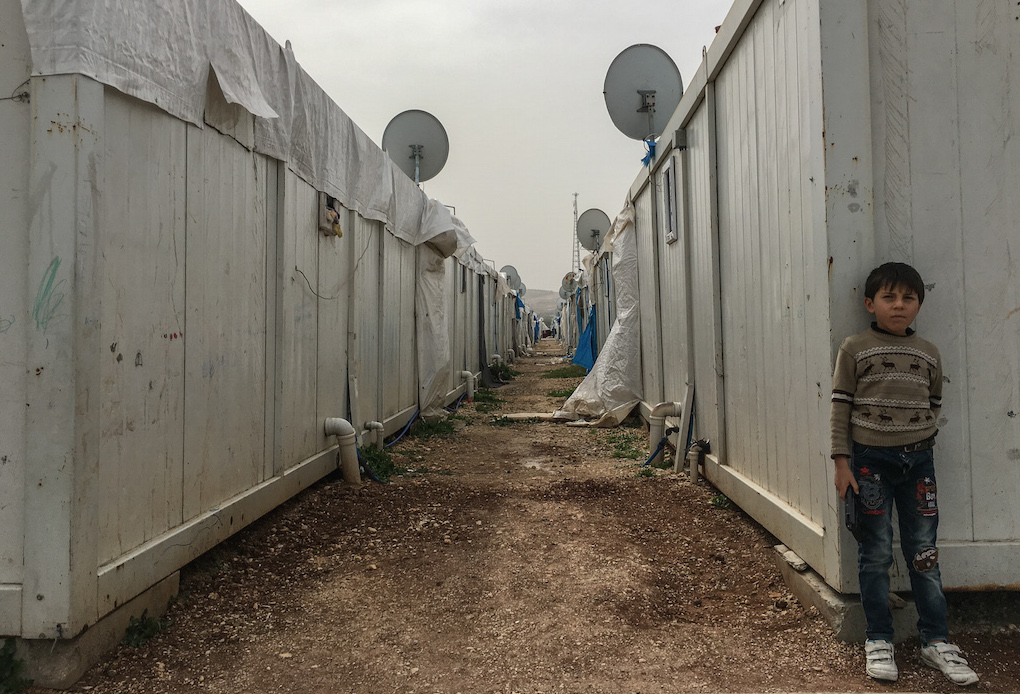 The film contains many other shocking images. A grid of white tents pitched in the desert sands of Iraq spreads as far as the eye can see; 277,000 Syrians are stuck here. Cut to a bombed-out Iraqi town and you understand that they had no choice. A shot of what I took to be a building swarming with insects turns out to be a drone’s eye view of a vast camp and hundreds of people scurrying down the lanes between endless rows of tents (pictured above: Nizip-Camp Gaziantep, Turkey). In Paris refugees camp on pavements and under motorways; in Calais riot police demolish the Jungle, the camp where people hang out in the hope of smuggling themselves into Britain. In Berlin, meanwhile, hundreds are housed in aircraft hangers divided by flimsy partitions into rooms resembling booths in a trade fair.
The film contains many other shocking images. A grid of white tents pitched in the desert sands of Iraq spreads as far as the eye can see; 277,000 Syrians are stuck here. Cut to a bombed-out Iraqi town and you understand that they had no choice. A shot of what I took to be a building swarming with insects turns out to be a drone’s eye view of a vast camp and hundreds of people scurrying down the lanes between endless rows of tents (pictured above: Nizip-Camp Gaziantep, Turkey). In Paris refugees camp on pavements and under motorways; in Calais riot police demolish the Jungle, the camp where people hang out in the hope of smuggling themselves into Britain. In Berlin, meanwhile, hundreds are housed in aircraft hangers divided by flimsy partitions into rooms resembling booths in a trade fair.
Surely such accommodation is temporary? Not according to the on-screen information, which reveals that a refugee can expect to remain displaced for 26 years. We follow a convoy of brightly coloured lorries wending its way along dusty roads to Afghanistan. Pakistan has decided to repatriate its Afghan refugees, whether or not they will be welcome after 30 years away. A Palestinian camp in Lebanon has been in situ for 60 years; there’s little hope of them returning since 80 percent of the population back home in Gaza are dependent on humanitarian aid. A brief moment of relief in this gruelling film is provided by an encounter with a group of giggling students who liken Gaza to an open prison. They are on the beach, they say, because there is nowhere else to go.
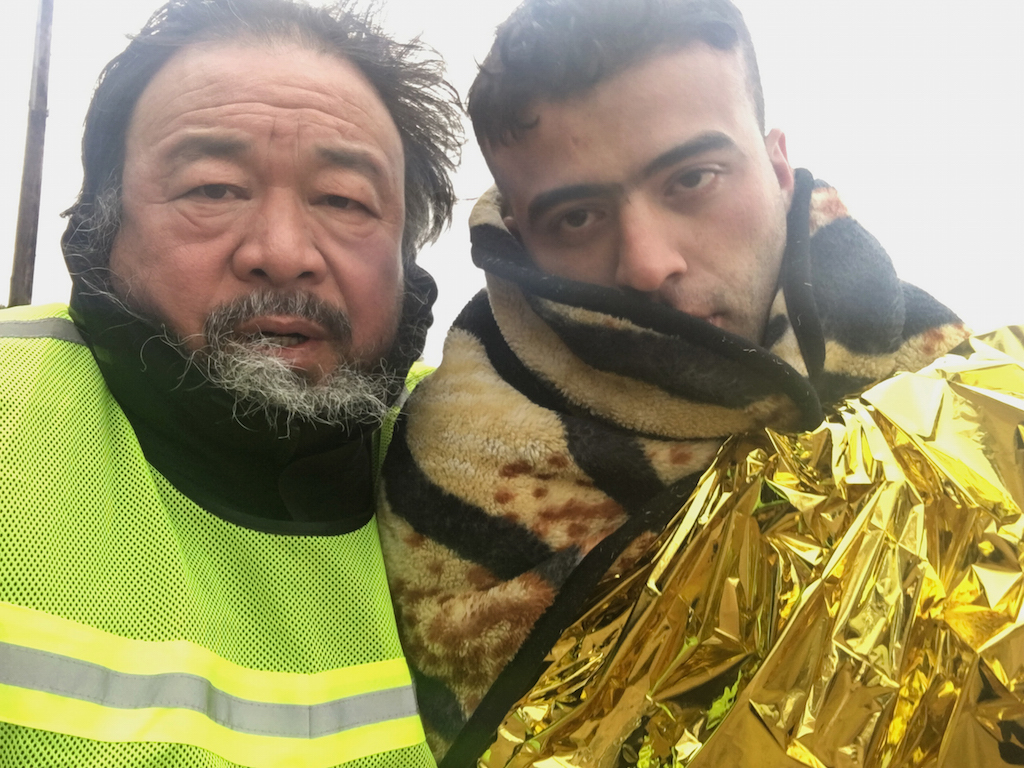 Ai Weiwei’s remit is global; filming takes place on the Mexican/US border as well as in Afghanistan, Bangladesh, France, Greece, Germany, Iraq, Israel, Italy and Turkey. With 200 crew members, including six drone operators, involved in making this epic film, production must have been a huge task. There’s also footage recorded on Ai Weiwei’s smartphone. He has an irritating habit of popping up everywhere – grilling kebabs, comforting a vomiting woman, cutting hair, pretending to swap passports with a Syrian man and interviewing various worthies (pictured above right: Ai Weiwei with a refugee in Lesbos). It's a shame that he felt the need to keep reminding us what a great guy he is; the film would have been stronger without it.
Ai Weiwei’s remit is global; filming takes place on the Mexican/US border as well as in Afghanistan, Bangladesh, France, Greece, Germany, Iraq, Israel, Italy and Turkey. With 200 crew members, including six drone operators, involved in making this epic film, production must have been a huge task. There’s also footage recorded on Ai Weiwei’s smartphone. He has an irritating habit of popping up everywhere – grilling kebabs, comforting a vomiting woman, cutting hair, pretending to swap passports with a Syrian man and interviewing various worthies (pictured above right: Ai Weiwei with a refugee in Lesbos). It's a shame that he felt the need to keep reminding us what a great guy he is; the film would have been stronger without it.
We nip over to Kenya during a dust storm, which cloaks everything in a gritty haze. When it clears we discover a major cause of the problem; a herd of goats nibbles the last vestiges of greenery from the drought-stricken bushes. “Why not introduce sustainable grazing, as in other parts of Africa, so the plants can regenerate?” I want to yell at the screen. But I’m clobbered into silent despair by the numbers and the overwhelming scale of the challenge they represent. Already 250 million Africans are at risk from the effects of climate change and the population is predicted to double by 2050. The Human Flow looks set to continue.

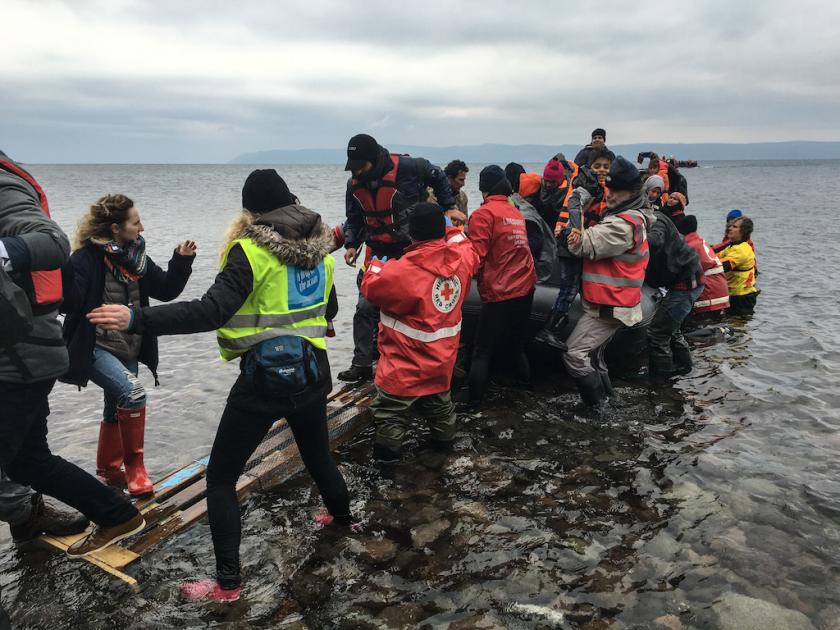


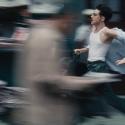









Add comment